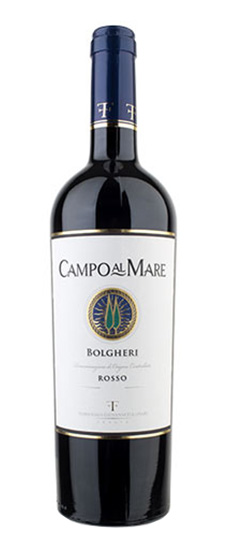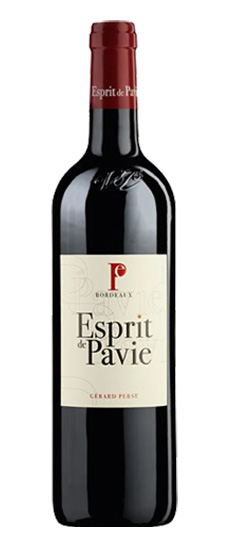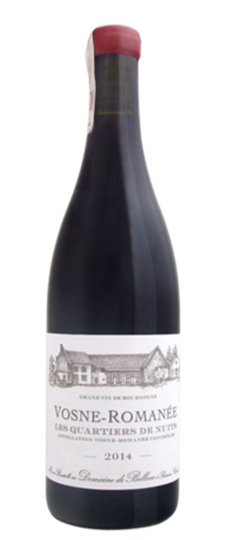Grape Variety
Bordeaux Blend Red Wine
A Bordeaux Blend, at its most basic, is any combination of those grape varieties typically used to make the red wines of Bordeaux. The phrase, which seems to have originated with British wine merchants in the 19th Century, relates as much to wines made from the blend as to the grape variety combination itself. Far from being an officially defined or legal term, it is almost never used for wine-labeling purposes (although it occasionally appears on back labels). Its equivalent in the United States is Meritage, which is not only legally defined, but also a registered trademark.
 Red Bordeaux Blends are known for their powerful structure and deep flavors. Dark fruits and berries such as plum and blackcurrant are commonly used to describe the flavors of red Bordeaux, although there is an unlimited range of terms that have been ascribed to them. Tannins tend to be relatively high in these wines, giving them a firm structure.
Red Bordeaux Blends are known for their powerful structure and deep flavors. Dark fruits and berries such as plum and blackcurrant are commonly used to describe the flavors of red Bordeaux, although there is an unlimited range of terms that have been ascribed to them. Tannins tend to be relatively high in these wines, giving them a firm structure.
Cabernet Sauvignon is widely accepted as a compulsory component of any Bordeaux Blend, with Merlot following close behind. In fact, the majority of Bordeaux Blend wines are often made exclusively from a blend of these two varieties. The remaining components are Cabernet Franc, Petit Verdot and Malbec, used in varying combinations and proportions. Even Carmenere is on the list of possible ingredients, despite being rarely used by modern Bordeaux vineyards (notable exceptions include Haut-Bailly, Brane-Cantenac and Clerc-Milon).
With the global wine industry expanding and developing at pace, the use of the term “Bordeaux Blend” is changing. Although a product of the Old World, it remains a useful concept, allowing the wine industry and enthusiasts everywhere to talk about Bordeaux-style red wines as an international group, irrespective of regionality.
Flexibility and a useful vagueness are key assets of the term “Bordeaux Blend”, but are also its Achilles’ heel; if it becomes too broad or too widely used it will lose its meaning. Is a Bordeaux Blend still a Bordeaux Blend if it contains Zinfandel, Sangiovese or Syrah? Without a formal definition to go by, the answer to that question lies entirely in the collective consciousness of those who use the phrase. Provided that Bordeaux’s vignerons don’t discover a new grape variety (Cabernet Sauvignon is only a few hundred years old), the term’s definition remains relatively clear.
The red Bordeaux style has reached almost every winegrowing country, with new candidates looking to emulate Bordeaux’s success. North and South America, Australia, South Africa and New Zealand all have their own expressions of the Bordeaux Blend. Even countries in North Africa and the Middle East produce their own interpretations of the style.
For more information on the various permutations of the Bordeaux Blend, please see Cabernet Sauvignon – Merlot, Cabernet Franc – Cabernet Sauvignon or Cabernet Franc – Merlot.
Food matches for Bordeaux Blend wines include:
- Steak entrecôte marchand de vin (red-wine sauce and shallots)
- Grass-fed wagyu rib-eye fillet
- Roast leg of lamb with rosemary and garlic
Region
Saint-Emilion Grand Cru Wine
Saint-Emilion Grand Cru wines are produced under slightly tighter production restrictions than regular Saint-Emilion wines. As with other Grand Cru appellations, the intention behind this is to improve the quality, and to distinguish the area’s finer wines from the more everyday wines.
Saint-Emilion Grand Cru
 There are four key differences between the production restrictions for Saint-Emilion wines, and those for Saint-Emilion Grand Cru wines. First, the vineyard yield is restricted to 8,000kg per hectare rather than 9,000 (which translates to 55 hL per hectare rather than 65). Second, the grapes (with the significant exception of Merlot) must be harvested with a must weight of at least 189 grams of sugar per liter rather than 180. Third, the finished wine must reach a minimum alcohol level of 11.5% ABV rather than 11%. Fourth, and finally the wine must be stored by the producer for an extra 14 months before being released for sale.
There are four key differences between the production restrictions for Saint-Emilion wines, and those for Saint-Emilion Grand Cru wines. First, the vineyard yield is restricted to 8,000kg per hectare rather than 9,000 (which translates to 55 hL per hectare rather than 65). Second, the grapes (with the significant exception of Merlot) must be harvested with a must weight of at least 189 grams of sugar per liter rather than 180. Third, the finished wine must reach a minimum alcohol level of 11.5% ABV rather than 11%. Fourth, and finally the wine must be stored by the producer for an extra 14 months before being released for sale.
Since the introduction of the Saint-Emilion Grand Cru appellation in 1954, many have suggested that these conditions are too relaxed to warrant the term Grand Cru. The yield restriction is the same as that in force in Bordeaux’s other red-wine appellations (e.g. Pauillac and Graves), and the exception of Merlot from the second condition instantly excludes more than 65% of the total Saint-Emilion vineyard area. Further, the increase of the minimum alcohol level by 0.5% is effectively meaningless, as very few, if any, wines from Saint-Emilion are ever contain less than 12% alcohol. The only condition which escapes this criticism is the extended elevage – the period which the wine spends (in tank, barrel or bottle) before general release.
All French wines undergo official panel tastings before being granted AOC status, which provides some guarantee of quality. But the panels test for typicity and consistency (they do not compare one Grand Cru appellation with another) and the quality expected of Saint-Emilion Grand Cru wines has been firmly established over the preceding 60-or-so vintages.
The top-tier wines from Saint-Emilion, then, are not marked out by their Grand Cru status, but by their appearance in the Saint-Emilion Wine Classification. This works in much the same as the classifications of the Medoc, Graves and Sauternes, but with one significant difference: it is periodically reviewed to keep it up-to-date and relevant. It was first drawn up in 1955, and (after a controversial review in 2006) was most recently updated in 2012. For more information see: Saint-Emilion Wine Classification.







![Amuse Bouche, Napa Valley [Merlot/Cabernet Franc] 2012](https://www.wineyou.com/wp-content/uploads/2017/06/Amuse-Bouche-Napa-Valley-MerlotCabernet-Franc-2012.jpg)